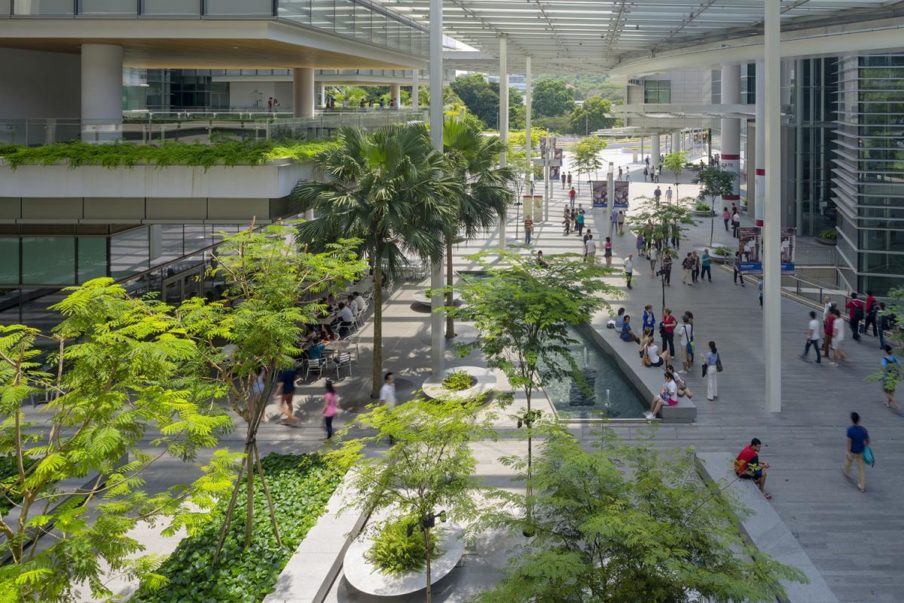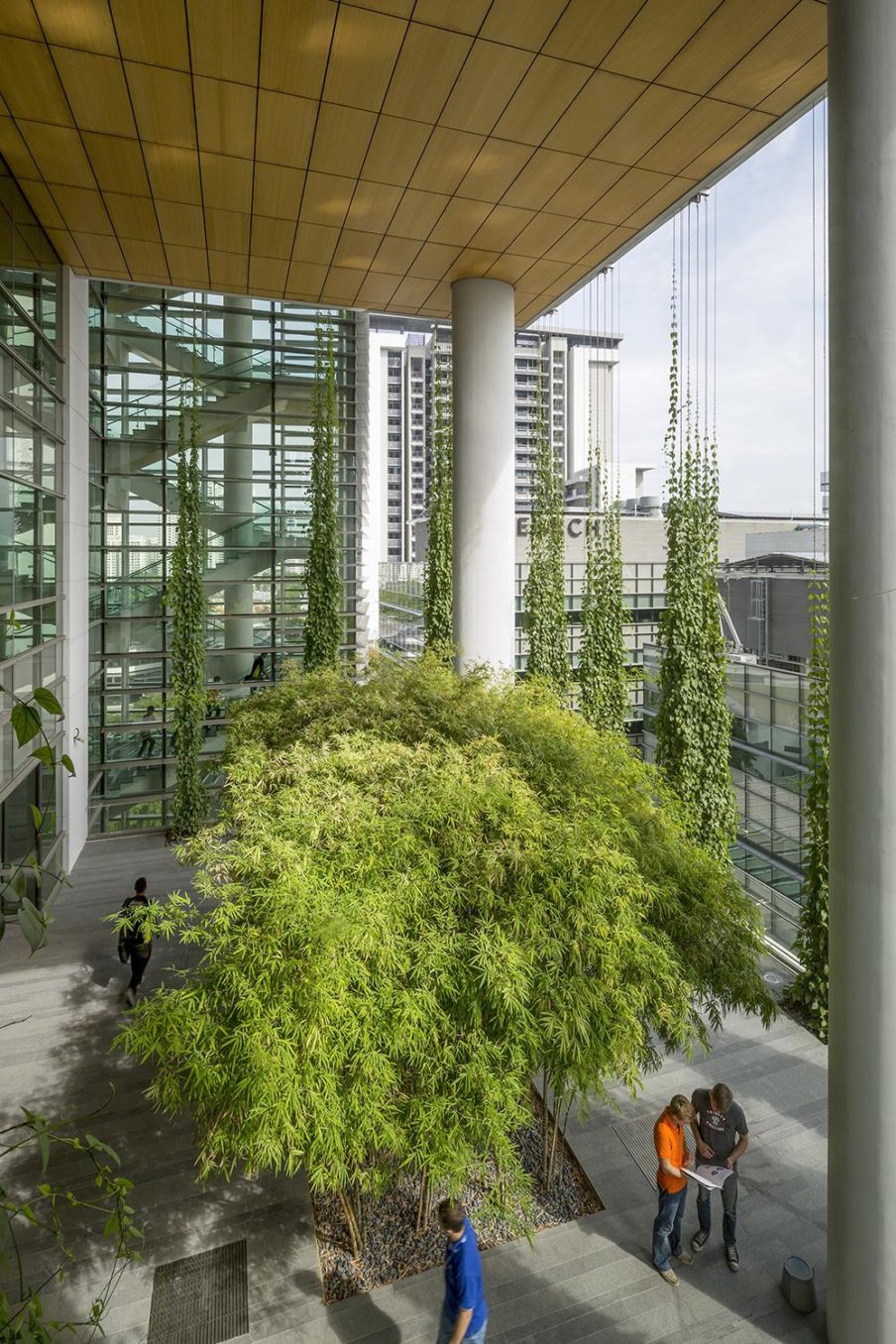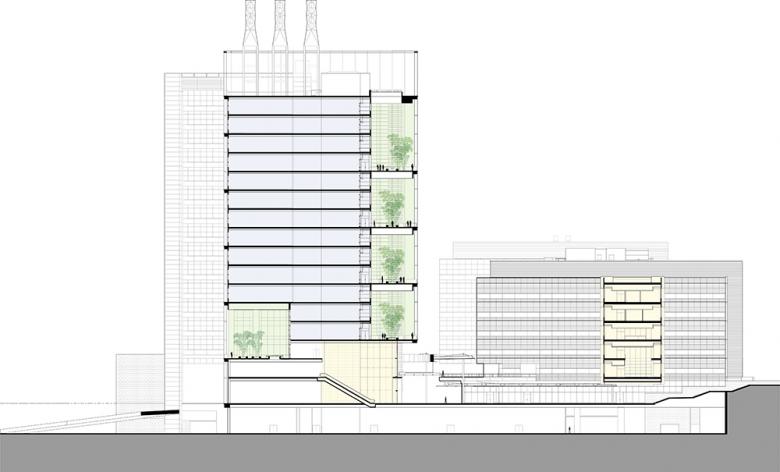The Campus for Research Excellence and Technological Enterprise


View of the Courtyard: They layered building complex creates a series of canopies of varying materialities, some trees, some building, elevated planters.
Photo: Tim Griffith Architectural Photography

The integration of nature into the campus is profound. The terraced nature of the buildings allows for multiple opportunities to insert plants into the campus environment. Trees punctuate meeting spaces, and hanging ivy create curtains around open spaces.
Photo: Tim Griffith Architectural Photography

Section drawings illustrate the systemic qualities of the site. We see how isolated design choices merge to create an complete site.